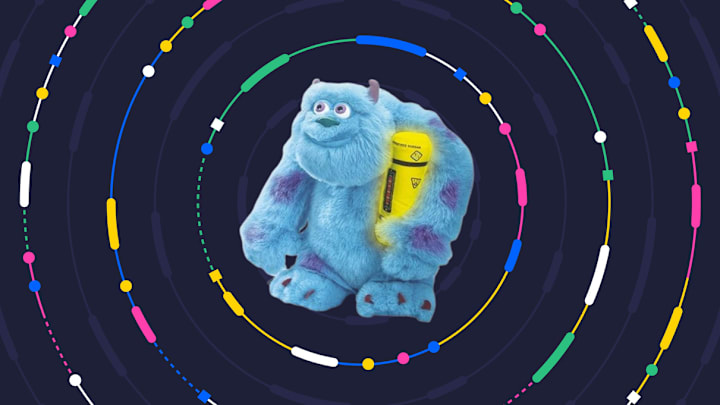Few other movie studios have a record quite like Pixar’s. Their bar for success is so high that of the 27 feature films they’ve released to date, 18 have a Rotten Tomatoes rating of more than 90 percent. According to one popular theory, all of these movies—from Toy Story to Elemental—just might be part of one interconnected universe.
Writer/YouTuber Jon Negroni came up with the Pixar Theory back in 2013, and continues to expand on it with each of the studio’s new releases. With at least one Pixar movie coming out this year—Inside Out 2 is scheduled to arrive in theaters in June, and there are rumors of a possible as-yet-unspecified release in November—Negroni’s ever-more-complex theory will continue to grow.
What’s the Big Idea?
Chronologically, it all begins with The Good Dinosaur (2015), which is set in prehistoric times. But in the alternate history in which the Pixar Theory exists, dinosaurs never went extinct. Instead, they had the chance to evolve further intelligence (which is an important part of the theory), and eventually began to co-exist with humans.

From there, viewers jump ahead to Brave (2012), which takes place around the 10th century, followed by the 1959-set Luca (2021) and then The Incredibles (2004), which takes place in the early 1960s. Between Brave introducing magic into the world and The Incredibles bringing in retro-futuristic technology, the seed was planted for the next stage of the theory: artificial intelligence.
According to the theory, the technology developed in The Incredibles eventually leads to the development of AI technology that feeds off real human emotions (see: Inside Out and Turning Red), leading to a world of feeling-fueled consumer products, as seen in Toy Story.
Due to both to dinosaurs’ alternative development and the presence of magic, this emotional state expands to encompass the world’s animals, which take on human emotional attributes when they are exposed to people, as in Finding Nemo, Ratatouille, and even Up. And then it all goes wrong ...
The Death of Life as We Know It
As the plotline of this theory continues: Buy’n’Large, the corporation behind all this technology, has expanded to take over the world by the time WALL·E takes place. Humans, who are quickly dying out (both Coco and Soul feature scenes that deal with the afterlife), decide to abandon planet Earth and leaving everything behind—including their cars, which begin to take on human attributes. In fact, because of WALL·E’s sprawling timeline, the Cars trilogy takes place entirely within WALL·E’s runtime.

With humans returned to Earth by the time WALL·E’s closing credits roll, the leaching of their emotions has gotten to the point where even insects start acting like humans, as seen in A Bug’s Life. Then, in a faraway future, the evolved animals of Monsters, Inc. use time travel doors to source those oh-so-valuable emotions from the past.
Eventually—and tragically—it all comes full circle.
According to Negroni’s theory, Boo—the impossibly adorable little girl from Monsters Inc.—ends up traveling through time herself, looking for her monster pal Sulley. Though she never finds him, she does become the witch from Brave (there’s an etching in her workshop that looks a lot like Sulley).
In the End...
It’s all nonsense, of course. The real connection between Pixar’s otherwise unrelated movies is much more a case of filmmaking colleagues having some fun by inserting a few in-jokes and callbacks here and there than a meticulously planned, absurdly convoluted, millennia-straddling attempt to connect more than two dozen movies. But it’s an undeniably impressive theory nonetheless, piecing together Easter eggs and offhand references into an extraordinarily well thought-out manifesto.
To infinity … and a bit further.
